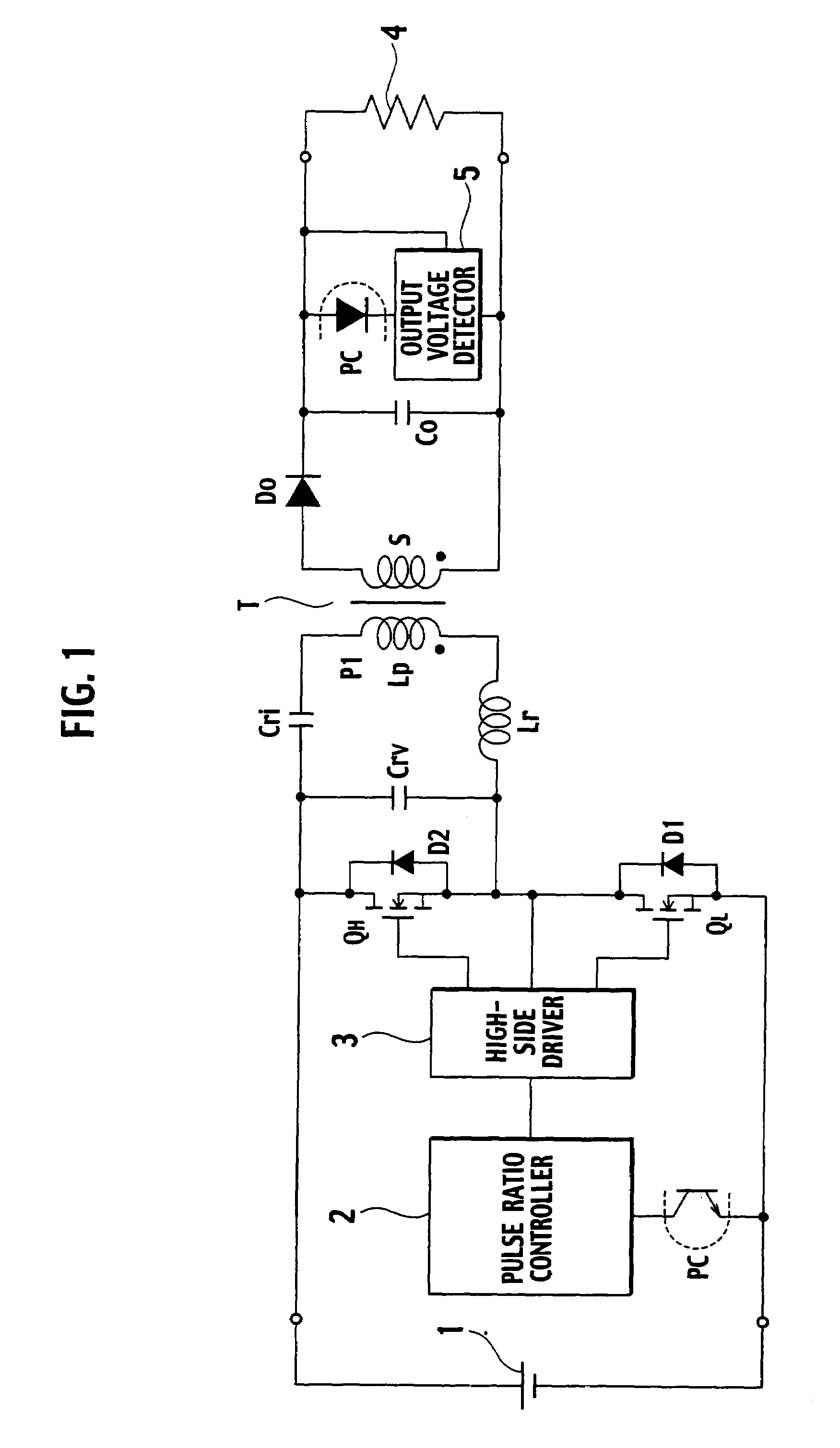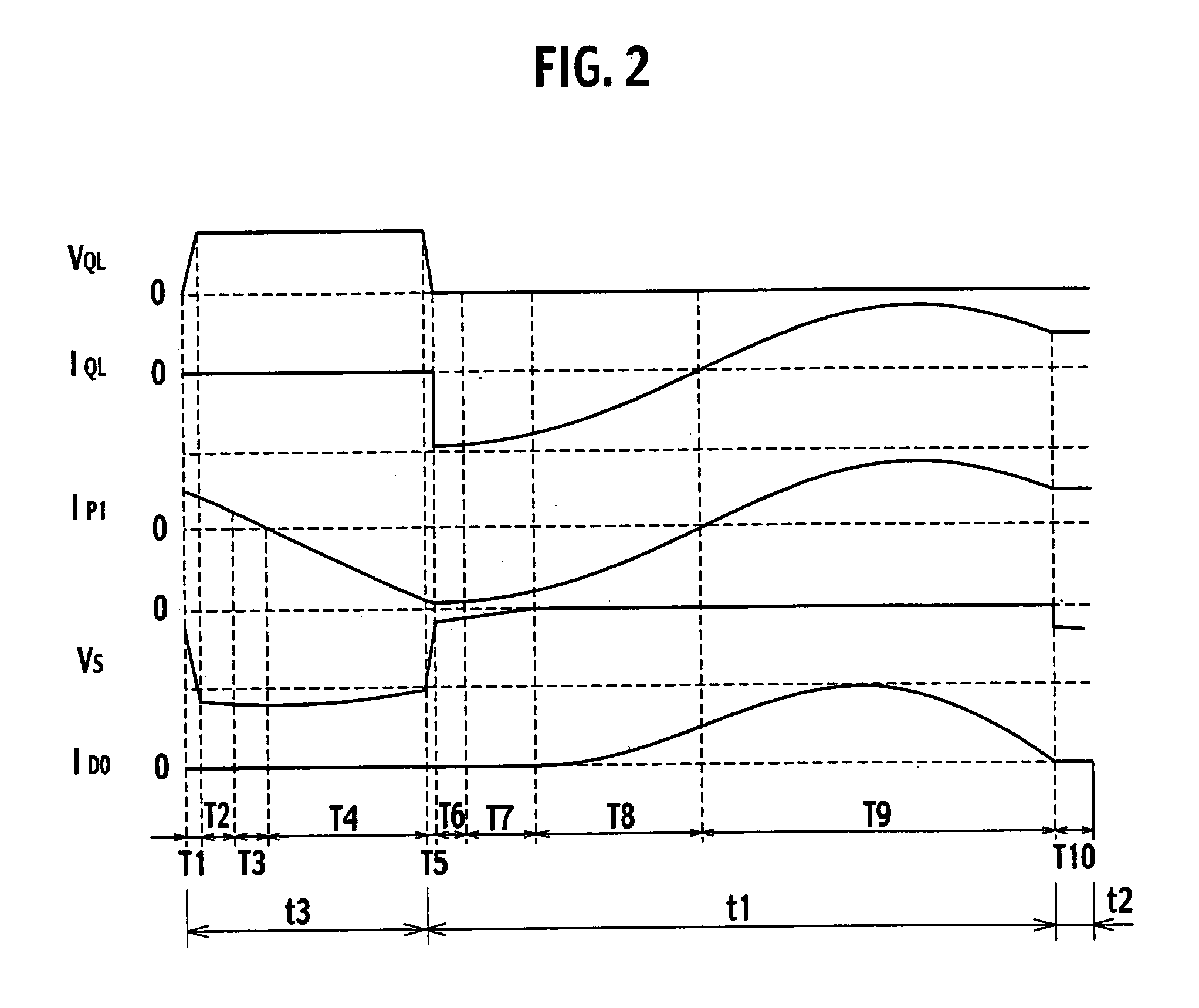Resonant power source apparatus
a power source and auxiliary winding technology, applied in the direction of electric variable regulation, process and machine control, instruments, etc., can solve the problems of complex circuit, insufficient auxiliary winding for detecting voltage, and insufficient auxiliary winding for correctly detecting a period during which energy is supplied from the primary side to the secondary side, so as to reduce switching noise and switching loss, high efficiency, and low noise
- Summary
- Abstract
- Description
- Claims
- Application Information
AI Technical Summary
Benefits of technology
Problems solved by technology
Method used
Image
Examples
first embodiment
[0047]FIG. 4 is a circuit diagram showing a resonant power source apparatus according to the first embodiment of the present invention. Compared with the resonant power source apparatus of FIG. 1, the resonant power source apparatus of FIG. 4 additionally has an auxiliary winding P2 and a resonant period detector 12.
[0048]The auxiliary winding P2 is provided for a transformer Ta and is tightly coupled with a secondary winding S. The resonant period detector 12 detects, according to a voltage of the auxiliary winding P2 of the transformer Ta, a period during which energy is transmitted from the primary side to the secondary side of the transformer Ta and provides a resonant period detection signal to a pulse ratio controller 2a.
[0049]The pulse ratio controller (PRC) 2a receives a detected voltage from an output voltage detector 5 and carries out pulse ratio control to alternately turn on / off switching elements QL and QH, thereby maintaining a constant voltage for a load 4. The pulse...
second embodiment
[0069]According to the resonant power source apparatus of the first embodiment, the auxiliary winding P2 is tightly coupled with the secondary winding S, and therefore, a resonant period detection signal from the resonant period detector 12 falls immediately at the end of a period during which energy is transmitted from the primary side to the secondary side of the transformer Ta. Due to the voltage-resonant capacitor Crv, each of the switching elements QL and QH turns on / off at a certain inclination. As a result, the resonant period detection signal rises at a certain inclination (i.e. out of plumb in a time chart which causes delay).
[0070]This inclination causes a problem of erroneously turning off the switching element QL. More precisely, upon receiving a gate signal, the switching element QL turns on to transmit energy to the secondary side of the transformer Ta. In a case where the above-mentioned inclination causes a delay in detecting the resonant period detection signal, the...
PUM
 Login to View More
Login to View More Abstract
Description
Claims
Application Information
 Login to View More
Login to View More - R&D
- Intellectual Property
- Life Sciences
- Materials
- Tech Scout
- Unparalleled Data Quality
- Higher Quality Content
- 60% Fewer Hallucinations
Browse by: Latest US Patents, China's latest patents, Technical Efficacy Thesaurus, Application Domain, Technology Topic, Popular Technical Reports.
© 2025 PatSnap. All rights reserved.Legal|Privacy policy|Modern Slavery Act Transparency Statement|Sitemap|About US| Contact US: help@patsnap.com



